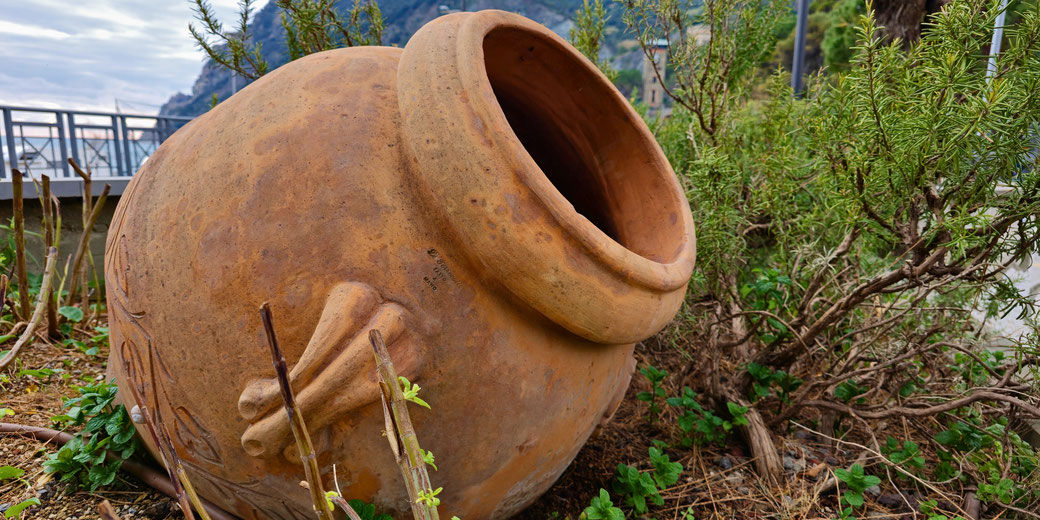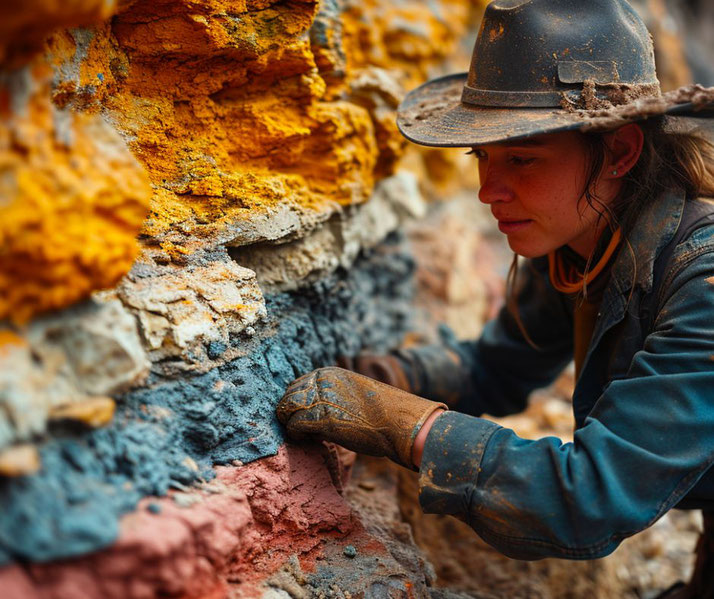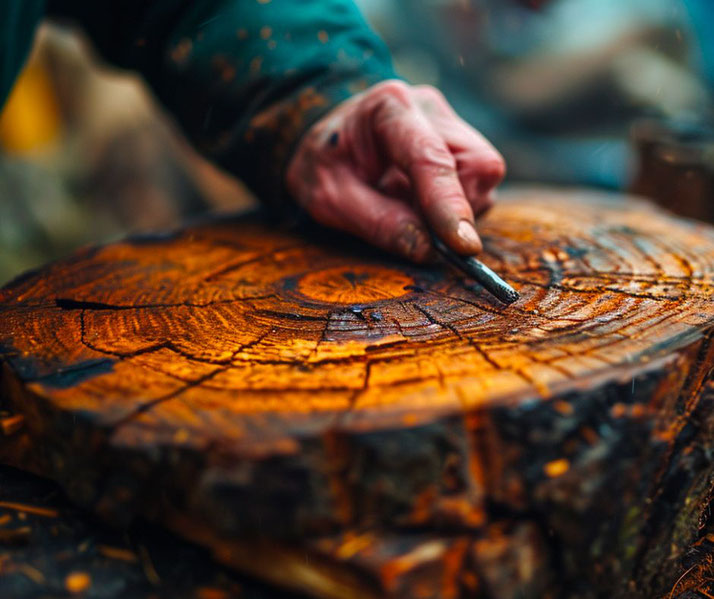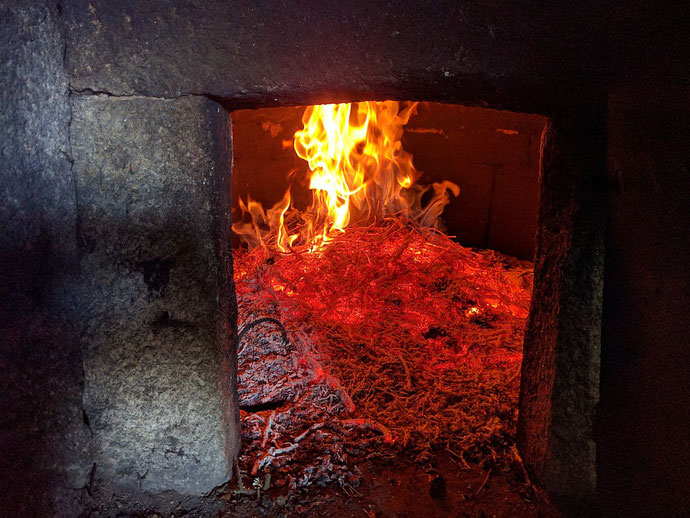How archaeologists date historical artefacts

When archaeologists find ancient artifacts, they want to know how old they are so that they can understand the past better.
Unfortunately, very few items from history have exact dates on them, which makes it very difficult to know for certain when things were originally made.
Therefore, archaeologists and scientists have to rely upon clever ways of finding out how old things are. These ways are referred to as ‘techniques’, which allow people to measure different things in or around an individual artifact that can provide clues about its age.
There are two groups of dating techniques that archaeologists can use to date an object.
- One group of techniques is called ‘relative dating’ techniques.
- The other group is known as ‘absolute dating’ techniques.
Let’s look at each category in turn and examine specific examples of each kind.
Relative dating techniques
Before the development of modern science, archaeologists had to find general ways of dating objects.
The easiest way to do this was to compare individual artifacts with each other.
If archaeologists knew which ones were older or younger than the others, they could easily organise the artifacts into chronological order.
In this system, knowing the exact year of creation was not possible, but it at least helped to know which items were older in relation to other objects.
Since this technique relied upon knowing the relationship between different artifacts, it is known as the ‘relative’ dating technique.
Here are some specific ways that archaeologists know which objects are older or younger than other objects:
1. Stratigraphy
Stratigraphy is the study of the soil layers in which individual artifacts are found.
Geologists have noticed for centuries that layers of soil have different colours, which indicates different periods of time when the soil was created.
A layer of soil is called a stratum, and multiple layers of soil are called strata.
Therefore, this system of relative dating is called stratigraphy.
This technique works because of a rule that archaeologists made called the ‘rule of superposition’.
The rule of superposition states that the soil layer closest to the top of the ground is the youngest, and the most recent, and as the layers get deeper, the older they are.
Therefore, artifacts that are found below other artifacts are considered to be older.

2. Typology
Another method of determining the relative date of artifacts is to compare the same type of objects over time.
For example, if we wanted to know which model of iPhone was older or younger, we need to compare the different models of iPhone over time.
Archaeologists have noticed that types of objects change gradually over years, decades, and even centuries.
As a result, we can arrange objects in order from youngest to oldest based upon changes to the shape, decorations or style over time.
Since this technique focuses mainly on the type of the objects, it is called typology.
Typology is most often used for pottery, also known as ceramics, since pots and vases survive a very long time in the ground and can be a reliable way of dating objects.
Ceramic typology is used all over the world, since most human cultures have used specific styles and decorations in their pottery.

Absolute dating techniques
The second kind of dating technique is called ‘absolute dating’. This is the more recent version of dating objects, since it relies on modern scientific techniques.
Absolute dating seeks to find a more precise, or an ‘absolute’, age for an object. To do this, scientists try to measure a chemical or physical substance within the object itself.
The exact chemical or physical element can change, depending upon the type of object.
1. Radiocarbon dating
The most famous, and the most widely used, absolute dating technique is called radiocarbon dating.
This system tries to measure a specific natural element, called carbon 14. Carbon 14 is found in all living objects on earth and is an element that is absorbed throughout the life of an organism.
However, once they die, carbon 14 slowly starts to disappear. Thankfully, the speed at which it disappears is very steady.
In fact, it is so steady and reliable, exactly half of the carbon 14 is still in the creature’s remains after 5730 years (called the ‘half-life’ of Carbon 14).
Due to its reliable nature, scientists can take a sample from an artifact and measure how much carbon remains, and then count backwards to determine how long ago the organism died.
Since this system only works on objects that were once alive, it can be used to date bones, shells and wood.

2. Dendrochronology
Another absolute dating technique is known as dendrochronology. This method seeks to find a precise date of an object based upon the age of trees.
The ancient Greek word for trees is dendros, so this system is called dendrochronology.
Scientists have noticed that when you cut down a tree, you can see rings inside the trunk of the tree.
Each of the rings is actually one year of growth during the tree’s life. However, upon careful inspection, you can see that each of the rings is slightly different.
Some are thick, some are thin, and some may have slightly different colours.
Growth rings can be unique based upon the environmental conditions during the year of growth.
Changes in rainfall, sunlight, temperature, and soil nutrients create a specific kind of ring.

However, all trees in the same location will have exactly the same growth. And, since each location produces a unique ring type, the sequence of years in that location will produce a unique pattern of growth ring in all of the trees in the area.
Therefore, whenever a tree is cut down to make buildings, weapons or any other wooden object, the wood stores the unique pattern with it.
Scientists can therefore compare different sections of wood and create a chronological sequence of the years in a specific location.
Since each ring is one year in time, dating wooden objects using dendrochronology can often provide a specific year when a wooden structure was made.
3. Thermoluminescence
The final absolute dating technique measures radiation from minerals found in pottery.
When clay is heated during the creation of ceramic objects, like pots and vases, the process of heating changes the minerals in the clay.
In nature, some minerals like quartz and feldspar, gradually collect radiation from the atmosphere, and this increases over time.
However, when these elements are in clay that is super-heated in a kiln to make pottery, these minerals release this radiation in the form of heat and light.
By the end of the heating process, these minerals are emptied of the radiation and have to start collecting it again.

The collection of radiation is quite steady, and scientists can work out how long it has been since the pottery was made by measuring how much radiation has been collected.
To do this, they take a part of the ceramic object and super-heat it again and measure the amount of heat and light that is released.
Since it measures heat (thermo) and light (luminous), it is called thermoluminescence dating.
Once the radiation is measured, archaeologists can ‘count back’ in time to estimate when the pottery was originally fired in a kiln.
Further reading
What do you need help with?
Download ready-to-use digital learning resources
Copyright © History Skills 2014-2024.
Contact via email
With the exception of links to external sites, some historical sources and extracts from specific publications, all content on this website is copyrighted by History Skills. This content may not be copied, republished or redistributed without written permission from the website creator. Please use the Contact page to obtain relevant permission.





